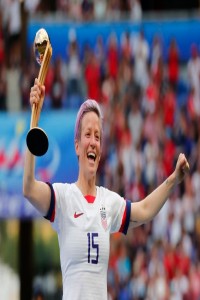Öz
Geographical research methods have been increasingly used in social sciences due to the interest in
how social behaviour and space are mutually constructed. However, there is still a limited number of
studies dealing with the application of such methods, the variety of produced data, and field
experiences. In this paper, I reflect on fieldwork experiences of my doctoral research, which
investigated how gender and class dynamics shape women’s experiences of leisure at the
neighbourhood level. During the eight-month fieldwork between 2014-2015, I used the methods of
the walk and talk interviews, focus groups with mapping exercises and participant observation in
leisure spaces of two differently-classed neighbourhoods in Bursa, Turkey. These methods provide
participants with new possibilities of expression, beyond verbal communication capacities, allowing
researchers to think about questions that may not necessarily arise in traditional sit-in interviews.
Therefore, this article concludes by suggesting that geographical methods can mirror the multilayered
and complex nature of gendered social relations
Anahtar Kelimeler
Kaynakça
- Bazeley, Pat and Lynn Kemp. “Mosaics, Triangles, and DNA: Metaphors for Integrated Analysis in Mixed Methods Research” Journal of Mixed Methods Research 6 (2012): 55-72.
- Brewer, John D. Ethnography. (Buckingham: Open University Press, 2000).
- Carpiano, Richard. M. “Come take a walk with me: The ‘‘Go-Along’’ interview as a novel method for studying the implications of place for health and well-being” Health & Place 15 (2008): 263– 272.
- Chick, Garry. “Culture as a Variable in the Study of Leisure” Leisure Sciences 31(3) (2009): 305-310
- Clark, Andrew and Nick Emmel. “Using walking interviews” Realities 13 (2010):1-6.
- De Certeau, Michel, Girard, Luce. and Pierre, Mayol(ed.). The Practice of Everyday Life, Volume 2: Living and Cooking. (Translated by T. J. Tomasik. Minneapolis: University of Minnesota Press, 1988).
- Deem, Rosemary. All Work, No Play? (Milton Keynes: Open University Press, 1986).
- Demirbaş, Gökben. Women’s Leisure in Urban Turkey: A Comparative Neighbourhood Study. (PhD. Glasgow University, 2018).
- Denzin, N. K. “Triangulation 2.0.” Journal of Mixed Methods Research. 6, no. 2 (2012): 80–88.
- Dixey Rachel and Margaret Talbot. Women, Leisure and Bingo (Trinity and All Saints’ College: Indiana University, 1982).
- Ekin Erkan, Nihal. Toplumsal Cinsiyet Perspektifinden “Kentsel Eşitsizlik” (PhD. Marmara University, 2006).
- Erder, Sema. Kentsel Gerilim. [Urban Tension] (Ankara: Um: Ag Publishing, 1997).
- Evan, James and Phil, Jones. “The Walking Interview: Methodology, Mobility and Place” Applied Geography 31 (2011): 849-858.
- Flick, Uwe. “Mantras and Myths: The Disenchantment of Mixed-Methods Research and Revisiting Triangulation as a Perspective” Qualitative Inquiry 23, no.1 (2017): 46-57.
- Green, Eileen and Hebron, Sandra and Diana Woodward. Leisure and Gender: A Study of Sheffield Women’s Leisure Experiences (Sports Council and Economic and Social Research Council, 1987).
- Green, Eileen and Carrie Singleton. “Risky Bodies at Leisure: Young Women Negotiating Space and Place” Sociology, 40, no.5 (2006): 853–871.
- Kitzinger, Jenny. “Introducing Focus Groups” British Medical Journal 311 (1995): 299-302.
- Kusenbach, Margarethe. “Street Phenomenology: The Go-Along as Ethnographic Research Tool” Ethnography 4, no. 3 (2003): 455-485.
- O’Reilly, Karen. Key Concepts in Ethnography (London: Sage Publications, 2009).
- Reinharz, S. Feminist Methods in Social Research (Oxford: Oxford University Press, 1992).
- Skeggs, Beverley. “Matter out of Place: Visibility and Sexualities in Leisure Spaces” Leisure Studies 18 (1999): 213– 232.
- Watson, Beccy and Aarti Ratna. “Bollywood in the Park: Thinking Intersectionally About Public Leisure Space”. Leisure/Loisir. 35, no.1 (2011): 71-86.
- Wearing, Betsy. Leisure and Feminist Theory (London: Sage Publication, 1998).
- Wheeldon, Johannes. “Is A Picture Worth A Thousand Words? Using Mind Maps to Facilitate Participant Recall in Qualitative Research” The Qualitative Report 16, no.2 (2011): 509-522.
- Wheeldon, Johannes and Ahlberg, Mauri, K. Mauri K. Visualizing Social Science Research: Maps, Methods and Meaning (Thousand Oaks: Sage Publication, 2012).
- Willis, Paul. (1980). “Notes on Method” Culture, Media and Language: Working Papers in Cultural Studies, 1972-79 ed. Stuart Hall, Dorothy Hobson, Andrew Lowe and Paul Willis (London: Routledge, 1980), 76-84.
- Zahle, Julie. “Practical Knowledge and Participant Observation” Inquiry: An Interdisciplinary Journal of Philosophy 55, no.1 (2012): 50-65.
Ayrıntılar
| Birincil Dil | Türkçe |
|---|---|
| Konular | Kadın Araştırmaları |
| Bölüm | Araştırma Makaleleri |
| Yazarlar | |
| Yayımlanma Tarihi | 20 Aralık 2020 |
| Yayımlandığı Sayı | Yıl 2020 Cilt: 12 Sayı: 2 |


